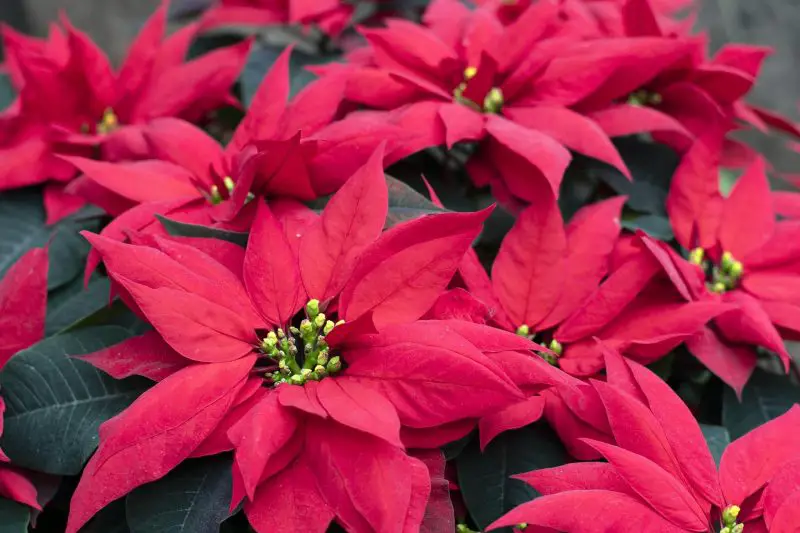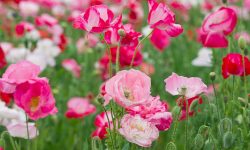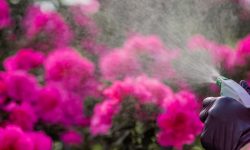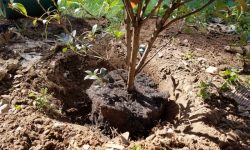Poinsettias are the quintessential symbol of the holiday season, bringing vibrant red hues and warmth to any space. Their colorful bracts brighten homes while evoking feelings of joy, togetherness, and cherished family moments. Yet, their beauty doesn’t last on its own. To keep poinsettias healthy and radiant, proper care is essential. A little daily attention can help your plant thrive, bloom brilliantly, and maintain its striking colors throughout the festive season.
Caring for poinsettias goes beyond simple watering or placing them in a sunny spot. It’s a journey of connecting with nature, noticing every small change in leaves and blooms. When you meet their needs for light, temperature, and humidity, you not only preserve their holiday beauty but also encourage strong, lasting growth. In this way, poinsettias become a living centerpiece, bringing joy, color, and festive cheer year after year.
Understanding Poinsettias and Life Cycle

Poinsettias are unique plants with a life cycle that differs from many common houseplants. They are perennial shrubs in their native Mexico, but most people grow them as seasonal indoor plants. Their colorful bracts, often mistaken for flowers, actually surround small, yellow true flowers called cyathia. Understanding this distinction helps in proper care and encourages longer-lasting blooms. By recognizing their natural growth patterns, you can better support your plant’s health and longevity.
The life cycle of a poinsettia begins with active growth in spring and summer. During this period, the plant develops new stems, leaves, and roots. Proper watering, fertilization, and light exposure are crucial for strong development. As the plant matures, it prepares for blooming. Shorter days and cooler temperatures in fall trigger the change in bract color, signaling the start of the holiday display. This photoperiodic response is sensitive, meaning even slight changes in light or temperature can affect bloom timing and color intensity.
After the holiday season, poinsettias enter a resting or dormant phase. Leaves may yellow and drop as the plant conserves energy. This stage is natural and allows the plant to recover before the next growth cycle. With careful care, including reduced watering and maintaining moderate temperatures, poinsettias can survive and bloom again in the following season. Understanding these stages ensures that you provide the right environment at each phase, keeping your poinsettia healthy and vibrant year after year.
Proper Lighting and Temperature Requirements
Optimal Light for Poinsettias
Poinsettias require bright, indirect light to thrive. Placing them near a sunny window ensures they receive enough energy for vibrant bracts. Direct sunlight can scorch the leaves, while too little light may cause leaf drop and fading colors. Aim for at least six hours of indirect sunlight each day. Regularly rotating the plant helps maintain even growth and prevents leaning toward the light source.
Lighting also affects the plant’s blooming cycle. During the fall, shorter daylight triggers bract color changes. If your poinsettia is in a room with inconsistent light or artificial lighting at night, it may fail to develop bright, red bracts. Maintaining a consistent lighting schedule allows the plant to respond naturally to seasonal changes. Observing the plant daily ensures you can adjust placement if leaves appear pale or droop. Proper light management is essential for keeping poinsettias healthy and visually striking throughout the holiday season.
Ideal Temperature Range
Temperature plays a crucial role in poinsettia care. They thrive in moderate indoor temperatures, ideally between 65 and 75°F (18–24°C) during the day. Nighttime temperatures should not drop below 60°F (15°C). Avoid placing the plant near cold drafts, heaters, or air conditioners, as sudden fluctuations can stress the plant and cause leaf drop.
Consistent temperatures help poinsettias maintain their vibrant bracts. Exposure to temperatures below 55°F (13°C) can damage leaves and slow growth, while overly warm environments may shorten the bloom period. Balancing warmth and avoiding stress ensures that the plant stays healthy. Monitoring indoor conditions and relocating the plant when necessary will promote long-lasting blooms and overall vigor. Maintaining proper temperature is a simple yet essential step in professional poinsettia care.
Watering Techniques for Poinsettias
Proper watering is one of the most critical factors in keeping poinsettias healthy and vibrant. Overwatering can lead to root rot, while underwatering causes leaves to wilt, yellow, and drop prematurely. The key is to maintain consistently moist soil without letting it become soggy. Check the top inch of soil daily; if it feels dry, it’s time to water. Water slowly and evenly, allowing the liquid to soak through the soil and reach the roots. Using a well-draining potting mix supports proper absorption and prevents compacted soil, which can suffocate the roots. Proper drainage is essential, so make sure your pot has holes and that excess water is removed promptly.
During the active growth and blooming period, poinsettias may require more frequent watering. Indoor heating and low humidity can cause soil to dry faster, so monitor moisture carefully. Avoid letting the plant sit in standing water, as this encourages fungal growth and damages roots. Empty any collected water from saucers beneath pots and adjust watering according to plant size, pot size, and soil type. Observing leaf color and firmness is a practical way to assess whether the plant is receiving the right amount of water. Wilting leaves usually indicate a need for immediate watering.
After the holiday season, poinsettias enter a resting or dormancy phase. During this time, reduce watering slightly to prevent overwatering while the plant conserves energy for new growth. Maintaining consistent but moderate moisture encourages a healthy recovery. Adjust watering frequency based on temperature, humidity, and indoor light conditions. By carefully observing your poinsettia and following these watering techniques, you help the plant stay strong, retain vibrant bracts, and prepare for another successful growth cycle. With proper attention, your poinsettia can remain lush, colorful, and long-lasting for many seasons.
Fertilization and Nutrient Management for Poinsettias
Choosing the Right Fertilizer
Proper fertilization is crucial for poinsettias to maintain vibrant bracts and healthy foliage. During the active growth period, the plant requires balanced nutrients to support new leaf and stem development. A water-soluble fertilizer with equal parts nitrogen, phosphorus, and potassium is ideal. Over-fertilization can burn the roots and damage leaves, so it’s important to follow the manufacturer’s instructions carefully. Applying fertilizer every two to four weeks ensures consistent nutrient supply without overwhelming the plant.
Balanced nutrition helps the plant resist diseases and recover quickly from stress. Poinsettias respond well to slow-release fertilizers as well, which provide a steady flow of nutrients over time. During the blooming phase, phosphorus-rich fertilizers can encourage more vibrant bract color. Observing leaf growth and overall plant vigor will guide you in adjusting fertilizer amounts. Proper fertilization strengthens roots, supports flowering, and keeps your poinsettia looking full and healthy throughout the season.
Seasonal Nutrient Management
Nutrient needs of poinsettias vary with seasonal changes. After the holiday season, when the plant enters its resting phase, reduce fertilization frequency to avoid stimulating new growth prematurely. This helps the plant conserve energy and prepares it for the next growth cycle. Maintaining moderate feeding during spring and summer promotes strong leaf and stem development, ensuring the plant is robust for future blooming.
Monitoring the plant’s leaves and overall health provides valuable feedback. Yellowing leaves may indicate nutrient deficiency, while excessive growth may signal over-fertilization. Adjusting fertilizer type, concentration, and frequency based on plant condition helps maintain balance. By understanding seasonal nutrient requirements and following careful fertilization practices, you can keep poinsettias thriving year-round and enjoy lush, vibrant displays every holiday season.
Pest and Disease Management for Poinsettias
Common Pests and How to Control Them
Poinsettias are susceptible to several common pests, including whiteflies, spider mites, and mealybugs. These insects feed on the plant’s sap, causing leaf yellowing, curling, and premature drop. Regularly inspecting the leaves, especially the undersides, helps detect infestations early. For minor pest problems, gently wiping leaves with a damp cloth or spraying with insecticidal soap can control their spread. Maintaining plant health through proper watering, lighting, and nutrition also reduces susceptibility to pests.
In more severe cases, systemic insecticides may be necessary, but careful application is crucial to avoid harming the plant. Introducing natural predators, such as ladybugs, can be an eco-friendly way to manage pests. Avoid overcrowding plants and maintain good air circulation to prevent infestations. By combining monitoring, preventive measures, and targeted treatments, you can keep your poinsettia free from damaging pests and ensure its leaves and bracts remain vibrant and healthy throughout the season.
Preventing and Managing Diseases
Diseases such as root rot, botrytis, and bacterial leaf spot can affect poinsettias if conditions are unfavorable. Overwatering and poor drainage often lead to fungal infections, while high humidity encourages mold growth. Proper watering, ensuring well-draining soil, and removing dead leaves promptly are essential preventive steps. Avoiding water on the leaves and bracts can further reduce the risk of fungal and bacterial infections.
Early detection is key to controlling disease. Signs like leaf discoloration, soft stems, or unusual spots indicate a problem. Infected plant parts should be removed immediately to prevent spread. Fungicides or bactericides may be necessary for severe cases, applied according to product instructions. Maintaining optimal light, temperature, and ventilation reduces stress and strengthens the plant’s natural defenses. With consistent care and vigilant monitoring, you can minimize disease risk and enjoy healthy, vibrant poinsettias throughout the holiday season and beyond.
Pruning and Shaping Poinsettias for Better Growth
Timing and Techniques for Pruning
Pruning is essential for maintaining a compact, healthy poinsettia and encouraging bushier growth. The best time to prune is after the holiday season, when the plant enters its resting phase. Start by removing any faded bracts and yellowing leaves, cutting back stems to about 4–6 inches from the base. Use clean, sharp scissors or pruning shears to prevent damage and reduce the risk of infection. Removing weak or crossing branches improves airflow and light penetration, which promotes stronger new growth.
Pruning also helps shape the plant, making it more aesthetically pleasing. Pinching the tips of young stems during spring and summer encourages lateral growth, resulting in a fuller, more robust plant. Regular inspection during the growing season allows you to selectively remove damaged or overcrowded stems. By pruning strategically, you not only improve the plant’s appearance but also enhance its overall health, ensuring vibrant bracts and dense foliage in the next blooming cycle.
Long-Term Shaping and Maintenance
Beyond seasonal pruning, maintaining the desired shape requires consistent attention throughout the year. Regular pinching and trimming of new shoots help retain a compact form and prevent legginess. This practice also stimulates multiple growth points, leading to more vibrant foliage and bracts during the holiday season. Avoid heavy pruning during active blooming, as it may reduce bract formation.
Shaping should be gentle and gradual, allowing the plant to recover without stress. Consistent maintenance prevents uneven growth and encourages a balanced structure. Additionally, removing dead or weak leaves promptly reduces disease risk and enhances the plant’s overall appearance. By following these pruning and shaping strategies, your poinsettia will develop strong stems, lush foliage, and a fuller, more vibrant display year after year. Proper care ensures both aesthetic appeal and long-term health, giving you a professional-quality plant.
Repotting and Soil Considerations for Poinsettias
Choosing the Right Soil Mix
Selecting the proper soil is crucial for poinsettias to thrive. They prefer a well-draining, slightly acidic potting mix that retains moisture without becoming soggy. A mixture of peat moss, perlite, and vermiculite works well, providing both aeration and nutrient retention. Avoid heavy garden soils or clay, which can lead to root rot and poor growth. Healthy soil encourages strong root development, which supports vibrant bracts and lush foliage.
In addition to drainage, nutrient content is essential. The soil should contain adequate organic matter to supply nutrients gradually. Using a pre-fertilized mix can help maintain consistent nutrition during the growing season. Check soil pH periodically; poinsettias thrive in slightly acidic conditions, typically between 5.5 and 6.5. Proper soil selection ensures the plant has a strong foundation, improving water absorption, nutrient uptake, and overall vigor. By providing an ideal soil environment, your poinsettia can flourish both in appearance and health.
When and How to Repot
Repotting poinsettias is best done in spring, after the resting phase and before active growth begins. Choose a pot slightly larger than the current one to allow room for root expansion. Gently remove the plant, taking care not to damage roots, and place it in fresh, well-draining soil. Fill around the root ball, firming lightly to eliminate air pockets, then water thoroughly to settle the soil.
Regular repotting prevents the plant from becoming root-bound, which can limit growth and reduce bloom quality. Inspect the roots during repotting, trimming any damaged or overly long roots to encourage healthy development. Maintaining the right pot size and fresh soil mix ensures the plant receives adequate water, nutrients, and support for stems. With proper repotting and soil management, your poinsettia will continue to grow strong, bloom beautifully, and remain a vibrant centerpiece year after year.
Mulching and Ground Care for Poinsettias
Benefits of Mulching
Mulching around poinsettias provides multiple benefits for both potted and garden-planted specimens. A layer of organic mulch, such as bark, straw, or compost, helps retain soil moisture and regulate temperature. This is especially important during temperature fluctuations, as poinsettias are sensitive to both heat and cold. Mulch also prevents soil from drying out too quickly, reducing the frequency of watering and minimizing stress on the plant.
In addition to moisture retention, mulch suppresses weeds, which compete for nutrients and water. By covering the soil surface, it creates a protective barrier that reduces erosion and maintains a stable growing environment. Organic mulch gradually decomposes, adding essential nutrients to the soil, improving fertility, and enhancing soil structure. Applying a 1–2 inch layer around the base of poinsettias supports root health and encourages strong, vibrant growth. Proper mulching is a simple yet effective way to promote plant vitality throughout the growing season.
Maintaining Soil Health
Ground care extends beyond mulching and plays a crucial role in poinsettia health. Regularly checking soil for compaction ensures that roots have access to oxygen and nutrients. If the soil becomes dense, gently loosening the top layer improves aeration and water infiltration. Soil amendments, such as compost or well-rotted organic matter, replenish nutrients and enhance microbial activity, which benefits overall plant health.
Monitoring soil moisture is also essential, as overly wet or dry conditions can stress poinsettias. Maintaining consistent moisture without waterlogging supports root development and bract coloration. Additionally, keeping the area around the plant clean from fallen leaves or debris reduces the risk of pests and diseases. By combining careful mulching with attentive ground care, your poinsettias will remain strong, vibrant, and long-lasting, creating an attractive and healthy display year after year.
Seasonal Care and Preparation for the Next Bloom
Winter Care
During winter, poinsettias reach their peak bract color, creating a festive focal point in homes. To maintain their vibrancy, place them in bright, indirect light, avoiding cold drafts or proximity to heaters. Water consistently, keeping the soil moist but not waterlogged. Overwatering can lead to root rot, while underwatering stresses the plant, causing leaves to yellow and drop prematurely. Maintaining stable indoor conditions is crucial for prolonging the colorful display and preserving the health of both leaves and bracts.
Temperature regulation is equally important. Daytime temperatures should remain between 65–75°F (18–24°C), with slightly cooler nights around 60°F (15°C). Avoid sudden temperature swings, which can weaken the plant and shorten bract lifespan. Monitor regularly for pests, such as whiteflies or spider mites, and treat infestations promptly. Removing yellowed or damaged leaves helps prevent fungal infections and maintains airflow. Proper winter care ensures your poinsettia stays strong and visually striking throughout the holiday season. Additional measures, such as gently dusting leaves to improve photosynthesis and lightly misting for humidity, also contribute to a healthier, longer-lasting plant.
Spring Care
After the holiday season, poinsettias naturally enter a resting phase. During early spring, reduce watering slightly to encourage dormancy and energy conservation. Fertilization should be paused until new growth appears. Remove any yellowed or dead leaves to enhance airflow, reduce disease risk, and prepare the plant for vigorous regrowth. Bright, indirect sunlight remains important during this phase to support photosynthesis and maintain residual energy in the roots.
Pruning is a vital spring task. Cut back stems to encourage lateral branching, which creates a fuller, more compact plant. Inspect roots during repotting if necessary, and provide fresh, well-draining soil enriched with organic matter. Pinching new growth at the tips promotes multiple lateral shoots, resulting in dense foliage and strong stems. Gradually increasing light exposure supports steady growth without stressing the plant. Proper spring care ensures your poinsettia develops a robust framework and stores energy efficiently, setting the stage for healthy summer growth and future bloom cycles.
Summer Care
Summer marks the active growth phase for poinsettias, requiring attentive care. Provide bright, indirect sunlight for at least six hours daily to support leaf and stem development. Maintain consistent watering to keep the soil evenly moist while avoiding waterlogging, which can lead to root rot or fungal issues. Fertilize every two to four weeks with a balanced, water-soluble fertilizer to supply essential nutrients. Adequate airflow around the plant helps reduce pest pressure and prevents fungal infections, while occasional leaf cleaning removes dust and allows better light absorption.
Pinching back new shoots encourages a compact, bushy structure and multiple lateral branches. Regular inspection for pests and signs of stress ensures timely intervention. Adjust environmental factors such as humidity and temperature to support vigorous growth. Summer care is crucial for strengthening stems, enhancing foliage quality, and preparing the plant for fall’s short-day conditions, which trigger bract coloration. By ensuring optimal care during this period, the poinsettia becomes a resilient, healthy plant capable of producing vibrant, long-lasting blooms in the next holiday season.
Fall Care
Fall is the critical preparation period for poinsettias to transition into their blooming phase. Shorter days and cooler temperatures trigger the transformation of bracts into vibrant colors. Reduce watering slightly to prevent excessive vegetative growth and encourage bract development. Maintain bright, indirect sunlight and avoid artificial lighting at night, which can interfere with the plant’s photoperiod. Monitoring soil moisture and adjusting environmental conditions, including temperature and humidity, ensures the plant responds properly to seasonal changes.
Remove any weak, damaged, or crossing stems to maintain a strong structure and improve light penetration. Mulching around garden-planted poinsettias helps retain soil moisture and protect roots from temperature fluctuations. Keep the area clean from debris to reduce pest and disease risks. Gradually adjusting care practices during fall ensures the plant develops vivid, long-lasting bracts. Proper fall management maximizes bloom quality, supports strong foliage, and prepares the poinsettia to remain healthy and visually striking throughout the winter holiday season, providing a stunning display for months.
Common Mistakes to Avoid and How to Solve Them
Overwatering and Underwatering
Overwatering is one of the most frequent mistakes when caring for poinsettias. Too much water saturates the soil, depriving roots of oxygen and leading to rot. Symptoms include yellowing leaves, mushy stems, and early leaf drop. To avoid this, water only when the top inch of soil feels dry to the touch. Ensure pots have drainage holes and use a light, well-draining mix. Empty saucers after watering to prevent roots from sitting in stagnant water.
Underwatering, on the other hand, stresses the plant by causing wilting, browning, and premature leaf loss. Dry soil weakens bract color and shortens blooming life. The solution is to water slowly and evenly, allowing soil to absorb moisture throughout. Consistency is crucial—check soil daily during active growth or in heated rooms. Maintaining a balanced watering routine helps keep poinsettias vibrant, extending both foliage health and bloom longevity.
Lighting and Temperature Errors
Lighting mistakes are another common issue. Poinsettias placed in dim corners receive insufficient energy, producing faded bracts and weak stems. Conversely, direct harsh sunlight can scorch delicate leaves, leaving brown patches. The solution is simple: place poinsettias in bright, indirect light for at least six hours a day. Rotate pots every few days to ensure even growth and prevent leaning toward the light source.
Temperature errors also affect the plant’s overall vigor. Exposure to drafts, heaters, or sudden cold shocks causes stress, leaf drop, and reduced bloom life. Ideal conditions are stable temperatures between 65–75°F (18–24°C) during the day and slightly cooler at night. Avoid placing poinsettias near doors, radiators, or fireplaces. Consistent temperature control not only protects foliage but also supports strong bract coloration, ensuring lasting beauty through the season.
Nutrient and Seasonal Care Mistakes
Fertilizer misuse often damages poinsettias. Excessive feeding burns roots, leaving leaves with scorched edges, while lack of nutrients results in pale foliage and weak stems. Use a balanced, water-soluble fertilizer every two to four weeks during spring and summer growth. Always follow label instructions, and reduce feeding during fall and winter when the plant slows down. Proper fertilization builds a sturdy framework for healthy blooms.
Seasonal care mistakes are equally damaging. Skipping pruning prevents compact, bushy growth, leaving poinsettias tall and leggy. Ignoring the short-day requirement in fall—when the plant needs 14 hours of darkness daily—results in green leaves instead of colorful bracts. To solve this, create a routine: prune in spring, feed in summer, and control light in fall. Aligning care with the natural cycle ensures vibrant bracts and strong foliage for the next bloom.
FAQ About Caring for Poinsettias
How often should I water my poinsettia?
Poinsettias prefer evenly moist soil. Water when the top inch feels dry, avoiding both overwatering and letting the plant sit in standing water. Overwatering can cause root rot, while underwatering leads to leaf drop. Regularly checking soil moisture ensures healthy foliage and vibrant bracts throughout the season.
What is the ideal light condition for poinsettias?
Poinsettias thrive in bright, indirect light. They require at least six hours of indirect sunlight daily. Avoid direct sun, which can scorch leaves, and low-light areas, which may cause bracts to fade and leaves to drop. Rotating the plant periodically ensures even growth and vibrant coloration.
When should I fertilize my poinsettia?
Fertilize during active growth, typically spring through summer, using a balanced, water-soluble fertilizer every two to four weeks. Avoid fertilizing during dormancy, as it can stimulate unwanted growth. Proper fertilization promotes strong stems, healthy leaves, and vibrant bracts for the upcoming bloom cycle.
How can I prevent pests and diseases?
Regularly inspect the plant for whiteflies, spider mites, and mealybugs. Maintain proper watering, light, and ventilation to reduce stress. Remove dead leaves promptly and treat infestations with insecticidal soap or natural predators. Prevent fungal or bacterial infections by avoiding water on leaves and ensuring good drainage.
How do I encourage my poinsettia to bloom again?
Poinsettias require a short-day photoperiod to trigger bract coloration. Starting in fall, provide 12–14 hours of uninterrupted darkness daily for at least six weeks, combined with bright daylight exposure. Consistent light, temperature, pruning, and proper care during spring and summer prepare the plant for a vibrant bloom cycle.
Conclusion
Caring for poinsettias requires attention, patience, and seasonal awareness. By understanding their life cycle, providing proper light, temperature, watering, and nutrients, and practicing careful pruning, repotting, and pest management, you can ensure long-lasting vibrancy. Seasonal preparation—from winter through fall—supports strong growth and vivid bracts. With consistent, thoughtful care, your poinsettia will not only brighten the holidays but thrive year after year, offering lush foliage and radiant colors. Mastering these essential maintenance tips transforms your plant into a stunning, professional-quality display that captivates every space.






